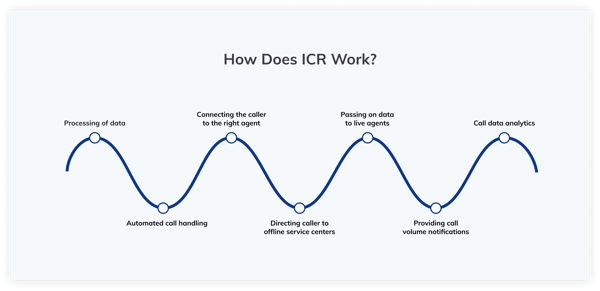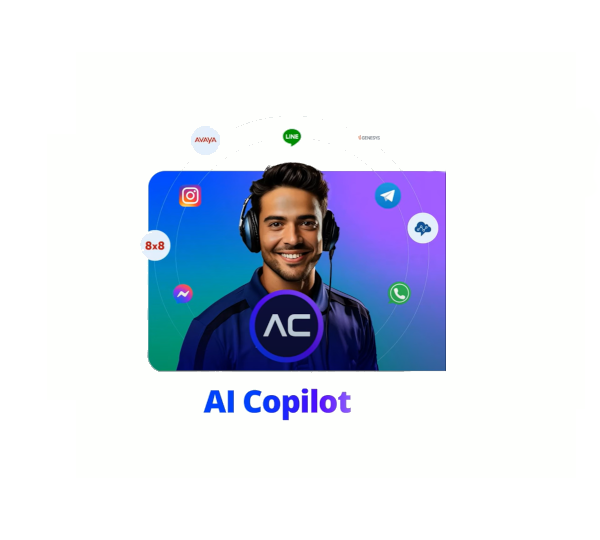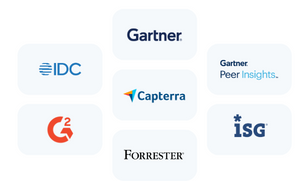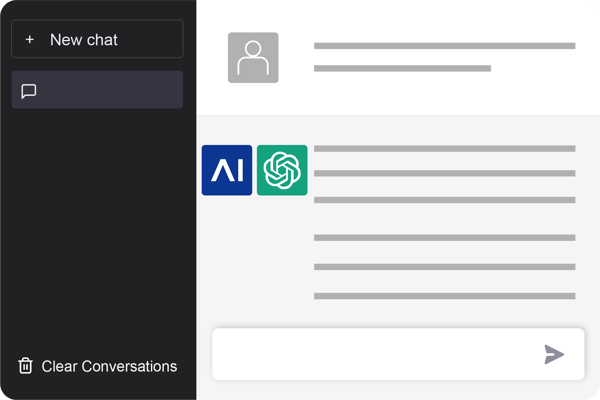Since call centers came into being, sometime in the 1900s, callers have consistently been complaining about the same things — long waiting times and unsatisfactory conversations with the wrong agents. In this article, we will look at Intelligent Call Routing, a next-gen call routing method that can contribute greatly to address these challenges and other long-standing issues.
Various call routing methods have been tried and tested throughout the decades in order to put customer dissatisfaction and contact center operational difficulties to rest.
None of them have been as advanced and efficient as intelligent call routing (ICR). With the power of artificial intelligence, ICR provides unmatched speed, accuracy, and responsiveness. But what is it exactly?
What is intelligent call routing?
An ICR system at a contact center routes incoming calls from voice, social, or digital channels to agents who are best suited to resolve these issues. While traditional ICR systems were rule-based, their modern-day counterparts make use of AI and machine learning algorithms for call routing. These algorithms may include call priority level, caller history, account status, and other agent and caller-specific details.
By using real-time data analytics capabilities, state of the art ICR systems analyze the nature of queries and agent profiles to find the perfect matches. In case the ideal agent is unavailable, ICR can also determine who the next best agent is according to the same parameters. These parameters for agent routing can include skill level, experience, training, track record, and more.
ICR, along with other automated systems, are becoming necessities for contact centers that handle large call volumes.
Before diving into how ICR works, here’s a brief look at current and previous routing systems.
Developments in call routing systems
The Automatic Call Distribution (ACD) was the first major revolution in call center history. An ACD is basically a system between callers and agents that distributes calls and routes them to suitable agents based on predefined rules. Here’s how far the industry has come from basic ACDs:
1. Manual routing
Before ACDs, calls used to be routed manually by operators on huge switchboards. The switchboards were so massive that there are stories of operators wearing roller skates to move around faster. Naturally, there was a lot of room for human error in this system.
2. Next available agent routing
The first ACD systems routed the longest-waiting caller to the longest waiting agent or the very next available agent. This system was aimed simply at reducing wait times. ACDs have since evolved to accommodate more complex rules.
3. Priority-based routing
This is a step up from basic ACD routing in a way that there are separate queues for different types of callers (regular, VIP, etc.), while the agents serving all queues could be from the same group. This was also aimed at reducing waiting time for preferred callers.
4. Skills-based routing
Skills-based routing (SBR) assigns calls to the agent who is most skilled in the caller’s query domain, instead of passing it on to the next available agent. This means having separate agent queues divided as per skills specific to problem types.
Even with all of these developments, callers in 2020 are still largely unsatisfied and pose the same grievances. A mindset shift to intelligent call routing is required to solve these problems. Recent technological enhancements and the introduction of Conversational AI technology (in particular) along with intelligent call routing leverage artificial intelligence to solve this problem.
How does ICR work?

ICR not only extracts huge amounts of data for routing calls faster and to the best-suited agents, but it also leverages this data for in-call and post-call assistance for a variety of use-cases. The ICR process involves:
1. Processing of data
An ICR system uses three types of data - caller input, caller data, and historical data. Caller input refers to the inputs given by callers through voice or IVR (Interactive Voice Response). These include account details, nature of the query, and type of outcome. Caller data refers to the phone number identification function of ICR through ANI (Automatic Number Identification) and Dialed Number Identification Service (DNIS). Historical data refers to account standing, past purchases, support history, personal information, and sentiment data. Each of these data-points is put together with help of the ICR system to decide the best agent suited to the caller’s needs.
2. Automated call handling
Combining ICR technology with natural language understanding (NLU) and an Enterprise Conversational AI Software stack can take the game to the next level. A Conversational AI stack, with a low-code graphical conversation editor, enables the creation of smart, machine learning-driven, and intelligent routing scenarios using powerful Conversational AI functionality. This empowers you to combine the automated understanding of natural language user inputs with the decision-based routing mechanisms of an intelligent conversation flow design.
3. Connecting the caller to the right agent
Apart from connecting callers with agents best trained and suited for the type of query, ICR systems can also connect a caller to the previous agent they have been speaking to. This is helpful in certain cases where a specific agent is already updated with the progress of the case and the caller wouldn’t want to waste time repeating details.
4. Directing caller to offline service centers
If a caller’s query needs to be resolved by a physical service center visit, an ICR system can also provide the requisite details and solve their query in no time without the involvement of a live agent at all.
5. Passing on data to live agents
ICR systems gather precision call insights which then also becomes easily accessible to live agents for smoother and more efficient solutions.
6. Providing call volume notifications
ICR systems can notify agents about the increase and decrease in call volumes for them to allocate and manage calls in a more organized manner.
7. Call data analytics
ICR is an intelligent system that can also provide data related to wait times, call duration, call volume management, resulting time, group and agent performance, etc. which can help contact center managers strategize and work upon weak links.
Intelligent call routing using Conversational AI technology
Combining the capabilities of natural language understanding or even a full-featured Conversational AI stack along with the ability to perform smart routing based on intelligent call routing algorithms provides the potential to create even more powerful and automated customer service applications. Such applications leverage AI technology at their core to handle inbound and outbound customer service requests in an automated fashion. The end result? They enhance a traditional call center with an AI-powered contact center automation solution such as Cognigy.AI.
The core features of Cognigy.AI include:
- An omnichannel experience (chat and voice).
- A seamless handoff from Conversational AI to live agents.
- Insightful analytics that can complement business intelligence and advanced contact management tools.
- Low-code editor to facilitate the handling of context-sensitive conversations along with requisite routing.
- Native voice gateway solutions to automate phone conversations
- Application and combination of NLU (Natural Language Understanding), Speech Recognition, AI-based routing, and other advanced AI features.
Does your customer service need an intelligent call routing system?
In short, yes. AI-enabled intelligent call routing is one of the most revolutionary digital solutions of the decade. It can provide path-breaking results such as improved First Call Resolution rates, better customer and agent satisfaction, and rich analytical insights, to name a few. Implementing ICR is no longer a choice but a necessity to overcome ailing ROIs and eliminate process bottlenecks in contact centers.

.png?width=60&height=60&name=AI%20Copilot%20logo%20(mega%20menu).png)




.png?width=600&height=600&name=Knowledge%20AI%20Feature%20image%20(2).png)










